Soviet wings in the sky of China
The PLA Air Force was created on November 11 1949 of the year after the victory of the Chinese Communist Party in the civil war.
If you touch the origins of the Chinese Air Force, you may find that first aid to China by aircraft, spare parts, specialists and pilots was provided in the 1939 year.
Background
Prior to the beginning of Soviet military aid, there were several small fighter manufacturing plants in China. In Nanchang, for example, there was a Fiat fighter production plant. It is also known about attempts to adjust the assembly of Curtiss Hawk III biplanes from spare parts.
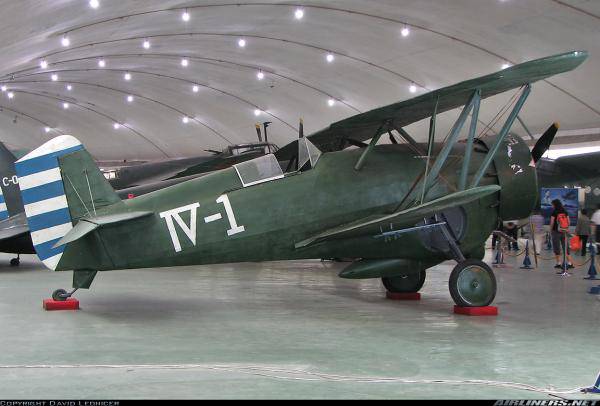
Curtiss Hawk III Chinese assembly and identification marks of the Kuomintang.
28.10.1937 of the year in Suzhou from the USSR arrived the first group of Soviet fighters I-16.
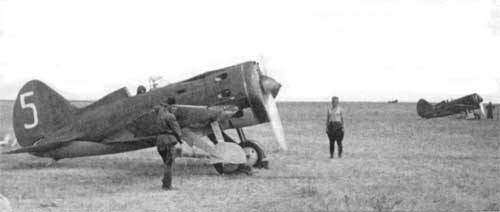
Aircraft 70-IAP at a field airfield in China.
Shortly after the start of Soviet supplies aviation The Chinese government decided to host the production of Soviet aircraft. On July 9, 1938, the Chinese ambassador to the USSR, Yang Tse, discussed this issue with the Soviet government. On August 11, 1939, a protocol was signed between the USSR and China on the construction of an aircraft assembly plant in the Urumqi region. The protocol provided for assembly at the plant up to 300 I-16s per year from Soviet units, parts and assemblies. The first phase of the plant was completed on September 1, 1940. In Soviet documents, the plant received the name "aircraft factory number 600." However, the Chinese manufactured in Urumqi I-16 (apparently, they produced type 5 and UTI-4) did not get it. In April 1941, the factory had 143 canned I-16s, stored there for 6-8 months. Then there was a decision to return these aircraft to the Union. The return began after the outbreak of war. Machines were assembled, flew around, camouflaged, after which followed the acceptance by military pilots and distillation to Alma-Ata. By September 1, 111 aircraft were surpassed, one I-16 was lost in the mountains. The remaining 30 I-16s and 2 UTI-4s left for Alma-Ata before the end of the year. During 1941-42, plant number 600 was engaged in the manufacture of individual units for the I-16, however, new aircraft were not built here.
There is also evidence that the Chinese have mastered the unlicensed production of "donkeys" based on the Italian-Chinese enterprise SINAW in Nanchang. 9 December 1937, the production there was minimized by order of Mussolini. The machine park of the SINAW plant was able to evacuate to Chongqing in the first half of 1939 by the river paths. The machines were installed in a cave with a length of 80 and a width of 50. The arrangement of the new plant took a year; Work on the preparation of the release of copies of the I-2 fighter began even before the arrival of the machines from the SINAW factory. The Chinese I-16 received the designation "Chan-16 Chia": Ch'an - the ancient Chinese feudal code of honor; "28" - the year since the founding of the Republic of China, 28 from the birth of Christ; "chia" - "first". A different designation can be written as "Chan-1939-I". The drawings, as in Spain, were taken from the details of the "live" fighters of the 28. There were not enough machines, and the humidity in the caves reached 16%. Based on real conditions, they completely changed the technology of pasting the monocoque skin of the fuselage. Product quality control methods remained primitive and time consuming. Metal spars, chassis and wheels - Soviet-made, they were supposed to be dismantled from the defective aircraft. M-100 engines - with faulty I-25 and I-152, Wright-Cyclone SR-16 F-1820 motors were also used for take-off power of 53 l. with. (they stood on the Chinese Hawk-III biplanes). Two-bladed propellers were supplied from the Soviet Union in spare parts kits for I-780 fighters, besides the Hamilton Standard screws could be removed from the Hawk II fighters. Armament - two large-caliber machine guns "Browning". The assembly of the first Chan-16-I fighter began in December 28, the first aircraft was completed only in July 1938. The aircraft received the factory number P 1939. The fighter underwent extensive ground tests before it first left the ground. Flight tests ended successfully. As far as we know, they built just two single Chan-8001-I fighters. With the appearance of the Zero fighters in the sky of China, the already not too great performance of the Chinese pilots on the I-28 fell to almost zero. It did not make sense to make a massively obsolete fighter massive.
Pay attention to the enlarged fairings of the wing armament, which are not typical for the Soviet I-16 models.
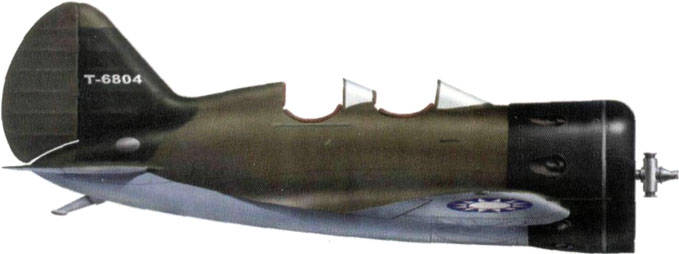
Chinese "Chan-28-I".
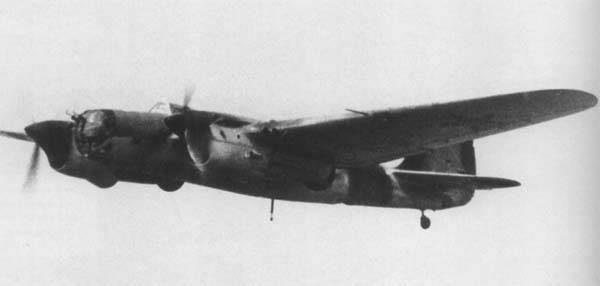
The Chinese also used the SB-2-M-103 bombers during the Sino-Japanese War.
The first aircraft arrived in China shortly after the launch of the serial production of the SB-2-M-103 at plant No. 125 at the end of 1939. Bombers entered service with squadrons of the Chinese Air Force, whose personnel consisted of Soviet volunteers.
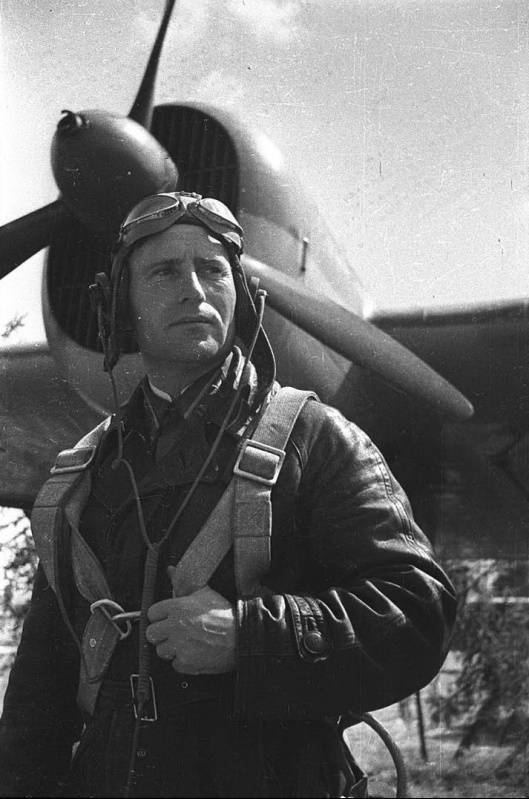
Major Ivan Polbin next to his SB-2.
However, it was at this time that the withdrawal of Soviet volunteers from China began. The USSR continued to support China’s resistance to Japanese aggression, but now preferred to provide purely material assistance. The recall of Soviet volunteers had an extremely negative effect on the combat capability of the Chinese air force. Inexperienced Chinese pilots crashed planes, and inexperienced technicians did not ensure proper maintenance of the equipment. The Chinese put the Security Council on the joke instead of attracting aircraft to participate in hostilities. 27 December 1939. Three SS bombers with crews from among the last Soviet volunteers remaining in China, taking off from the Xinzhang airfield, attacked the Japanese forces in the Kunlun Pass. Bombers escorted the last three combat-capable fighter Gloucester "Gladiator" from the 28-th Squadron. After the recall of the Soviet volunteers from China, all the surviving Security Forces were concentrated in the I and 2 groups of the Chinese Air Force.
From October 1937 to June 1941 in total. China received Soviet aircraft 1250. Soviet military experts advised the Kuomintang commanders, while Soviet pilots on the Soviet aircraft covered the Chinese Kuomintang troops from the air. In addition, on the territory of Xinjiang, it was decided to build a plant, to which components of the aircraft will be delivered from the USSR, which will further move under their own power, or rather, “their summer”. The transfer of Soviet aircraft to China along the route Alma-Ata - Lanzhou took a systematic character and received the code name "Operation Z". Moreover, no later than 1939, the Soviet leadership organized a training center in Urumqi, in which Soviet instructors trained Chinese pilots in piloting the P-5, I-15 and I-16 aircraft.
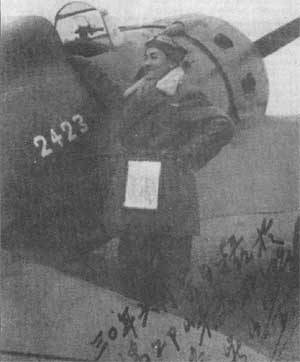 Chinese pilot on the background of his i-16, June 1941
Chinese pilot on the background of his i-16, June 1941Significant assistance in their creation and armament was played by the Soviet Union. From the middle of the 1950-ies began the production of Soviet aircraft in Chinese factories. The “big leap”, the break in relations with the USSR and the “cultural revolution” caused serious damage to the Chinese air force. Despite this, the development of their own combat aircraft began in 1960. After the end of the Cold War and the collapse of the USSR, China began to modernize its air force by purchasing Su-30 fighter-bombers from Russia and mastering the licensed production of Su-27 fighters.
The PLA Air Force participated in the Korean War (1950 — 1953), during which the United Air Force was created, consisting of Chinese and North Korean aviation units. During the Vietnam War (1965 — 1973), Chinese aircraft shot down a number of American unmanned reconnaissance aircraft and several planes that invaded the country's airspace. For one reason or another, the PLA Air Force almost did not take part in the Sino-Vietnamese War (1979).
Of course, everything that was transferred to China is impossible to enumerate: we are talking about hundreds of types of various products. But even a small enumeration will show that the cooperation was comprehensive, covering all areas at once and allowing the Chinese industry to be raised to the level required by that time.
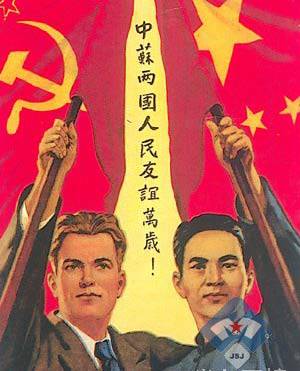 All the weapons, the production of which was mastered at that time in the PRC with Soviet assistance, were at a high world level, something could even be considered better and superior to their western counterparts. One can only guess what heights after such a launch would have been the Chinese military industrial complex, if not for the subsequent events: cooling of relations with the USSR, recall of Soviet specialists from the country in 1960, and later - a cultural revolution. This slowed down the development of the production of a number of weapons, the transfer of which to Chinese enterprises was just beginning.
All the weapons, the production of which was mastered at that time in the PRC with Soviet assistance, were at a high world level, something could even be considered better and superior to their western counterparts. One can only guess what heights after such a launch would have been the Chinese military industrial complex, if not for the subsequent events: cooling of relations with the USSR, recall of Soviet specialists from the country in 1960, and later - a cultural revolution. This slowed down the development of the production of a number of weapons, the transfer of which to Chinese enterprises was just beginning. Therefore, for example, the Chinese were able to figure out the full production of the J-7 and H-6 aircraft only in the 1970-e years. During the cultural revolution, most military programs not related to the creation of strategic weapons suffered from a reduction in state resources, political campaigns (including sending intelligentsia to re-education in the countryside), general disorganization at that time of Chinese science and the education system. International isolation also played its part, above all the lack of ties with the USSR, which had become China’s main military adversary.
Still work on copying the Soviet weapons continued on. Why Soviet? The army had to be re-equipped, the existing production base was created with the help of the USSR, many engineers learned Russian and knew Russian, and even after normalizing US-Chinese relations in the early 1970's, the Western countries did not want to transfer technology to the Chinese even after the normalization of the US-China relations.
Already without any Soviet licenses in 1970 – 1980-s, purchasing samples of weapons in third countries and copying them, the Chinese reproduced the famous Soviet 122-mm howitzer "D-30" (type 85), infantry fighting vehicle "BMP-1" "(type 86), anti-tank missile system" Baby "(" HJ-73 "), military transport aircraft" An-12 "(" Y-8 "), portable anti-aircraft missile complex" Strela-2 "(" HN -5 ") and some other weapon systems. Created the first original weapons, for example, an armored personnel carrier "K-63". Soviet prototypes were deeply processed, for example, the Q-19 attack aircraft was created on the basis of the MiG-5, and the J-21 fighter was used with the design of the MiG-8. Nevertheless, China’s military-technical backlog from developed countries only increased.
List of supplied, licensed and copied equipment
Bombers
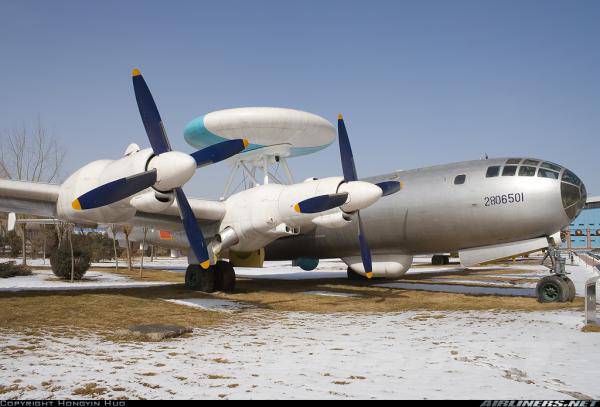
H-4. Tu-4, obtained from the USSR, were decommissioned in 70x.
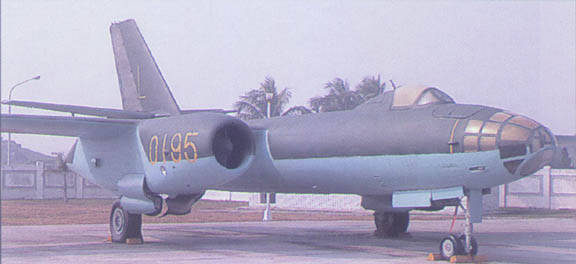
H-5 Harbin. A copy of the IL-28, removed from service.
In 50's a significant amount of IL-28 was delivered to China, including torpedo bombers armed with the torpedo PAT-52. After the deterioration of relations between the USSR and the People's Republic of China at the aircraft plant in Harbin, an IL-28 repair was organized, as well as the manufacture of spare parts for them. With 1964, there began the development of mass production of the bomber, which received the designation H-5 (Harbin-5) in the Chinese Air Force. The first production vehicle took to the air in April 1967. In September of the same year, the H-5 variant, the carrier of tactical nuclear weapons, was created. His first test with the dumping of a nuclear bomb took place 27 December 1968. Mass production was also mastered as educational and photo prospecting (HZ-5) modifications H-5. China was the second after the Soviet Union in terms of the number of IL-28 fleet. All versions of the aircraft are in service with the PRC at the present time. China actively exported H-5 to other countries.
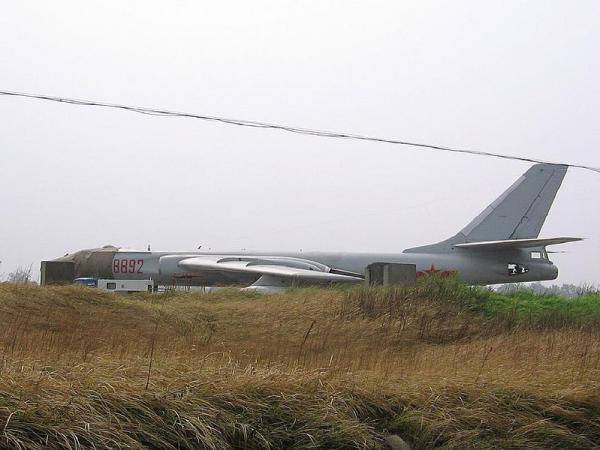
H-6 Xian. A copy of the Tu-16, carrier of nuclear weapons.
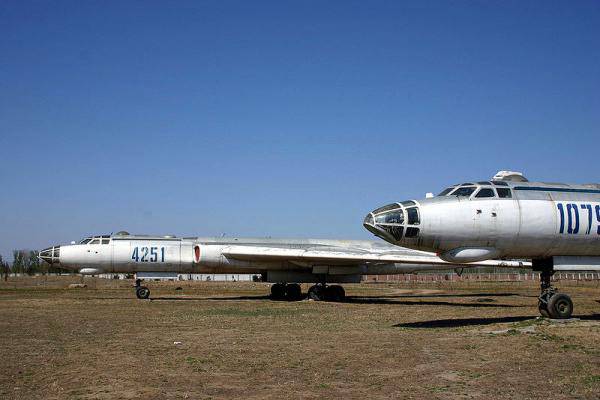
Fighters
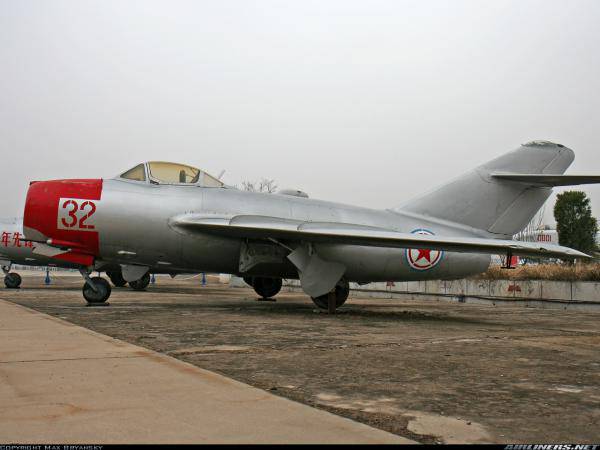
J-2. Obtained from the USSR MiG-15bis, decommissioned.
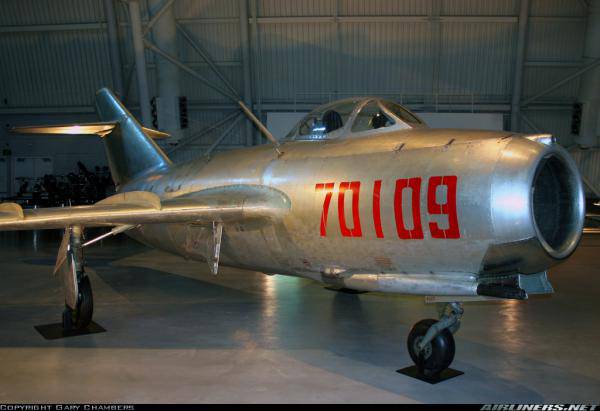
J-4. Received from the USSR MiG-17F, decommissioned.
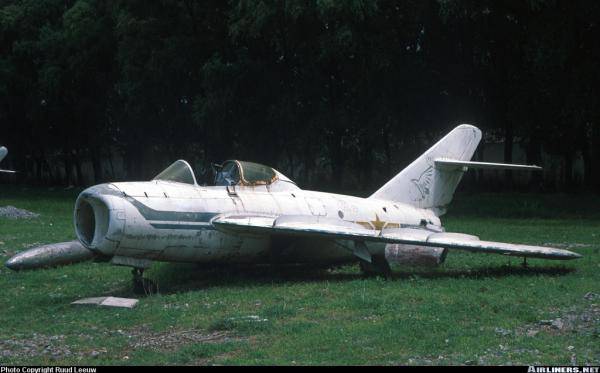
J-5 Shenyang. A copy of the MiG-17, removed from service.
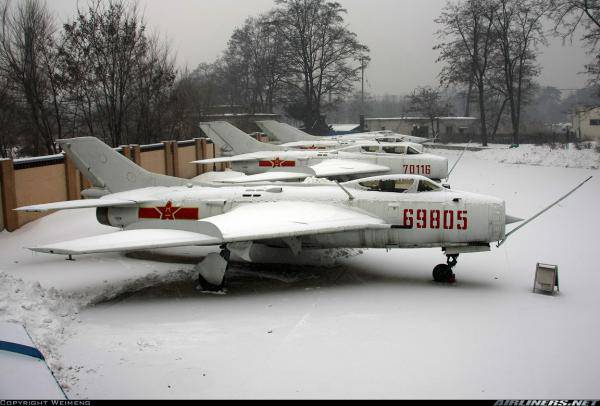
J-6 Shenyang. A copy of the MiG-19, removed from service.
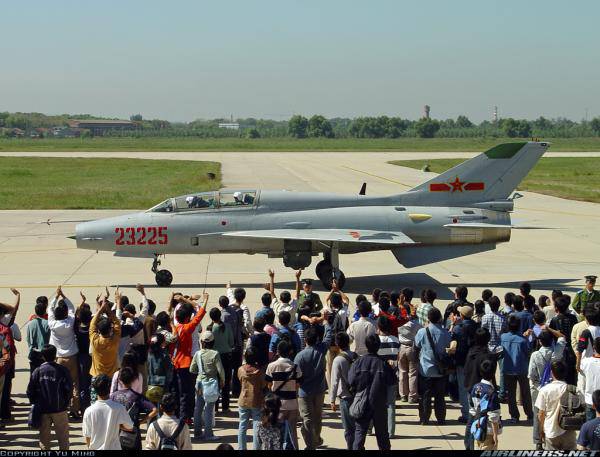
J-7 Chengdu. A copy of the MiG-21.
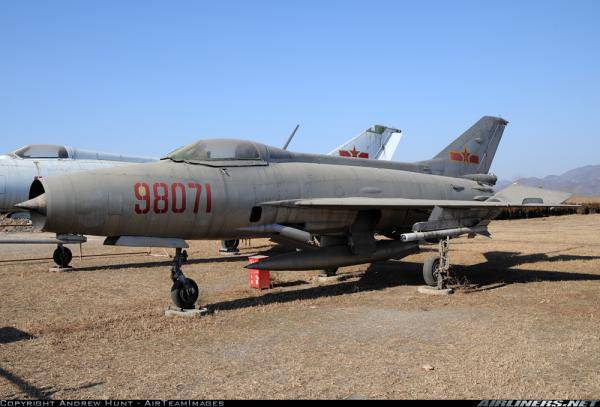
J-8 Shenyang. Interceptor based on J-7. This aircraft has no direct Soviet counterpart, although it was also created using design solutions and technologies used on the MiG-21.
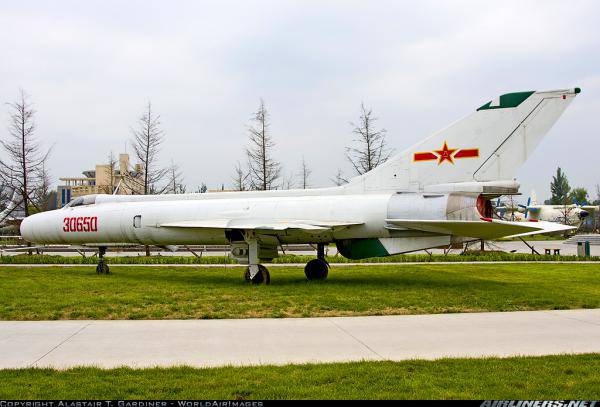
Shenyang J-8F. Analogue Su-15?
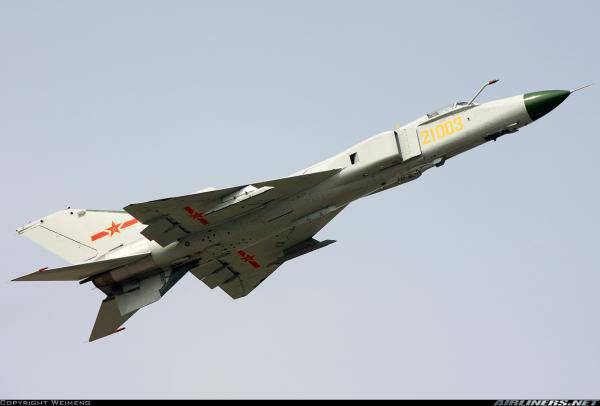
Su-15 (original)
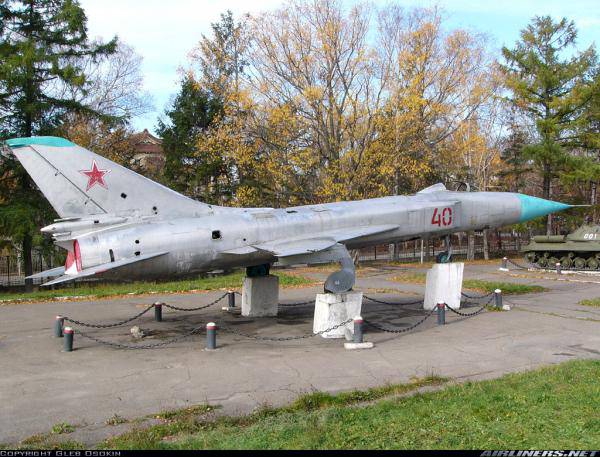
J-11 Shenyang. Copy Su-27SK.
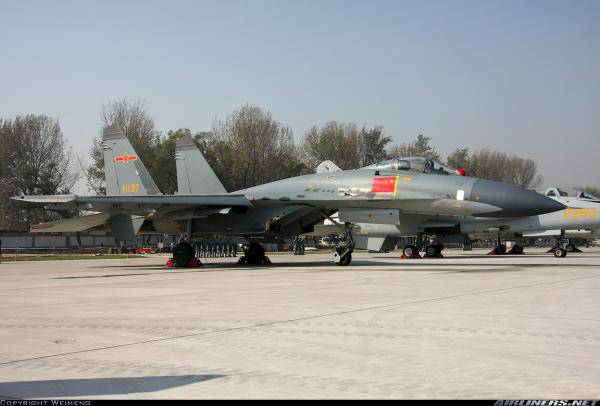
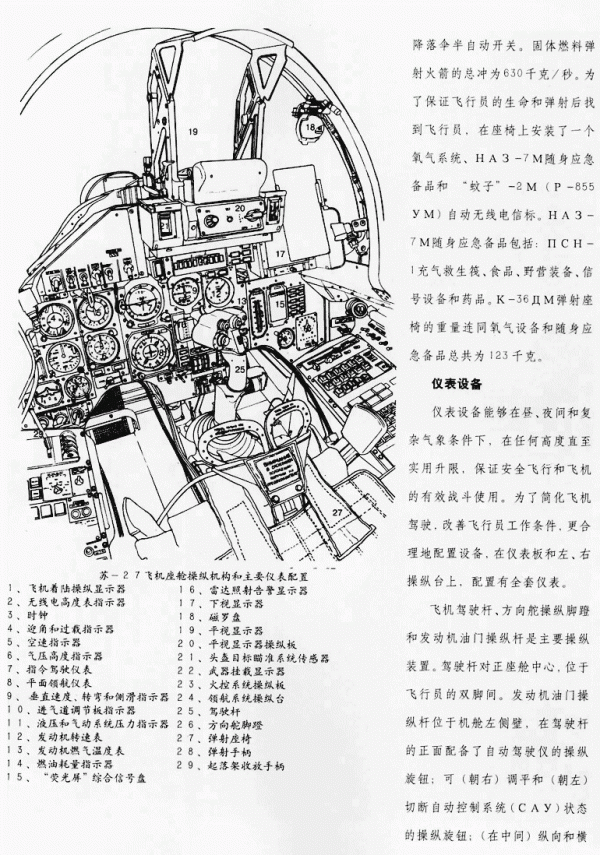
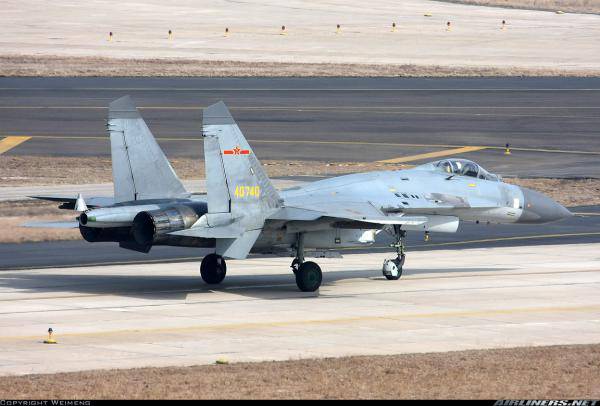
J-13. Obtained from Russia Su-30MKK and Su-30MK2.
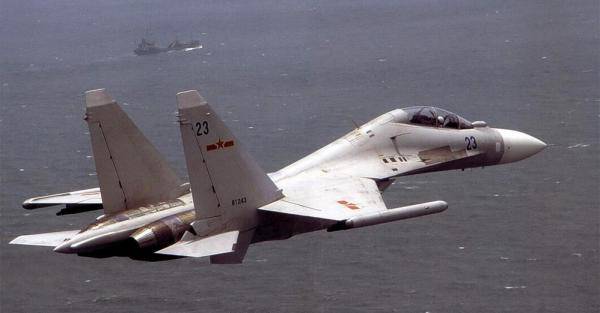
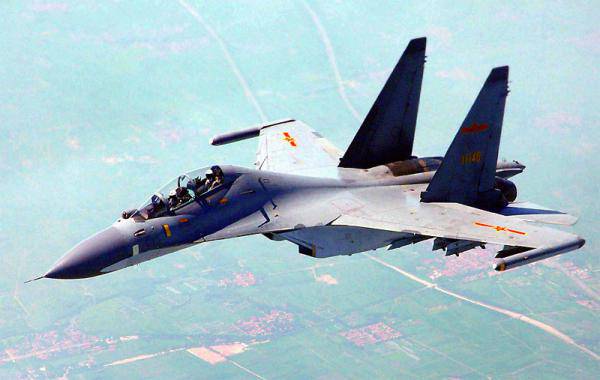
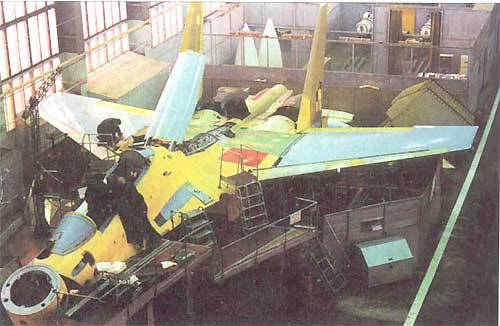
J-15. Shenyang Copy Su-33.
Training aircraft
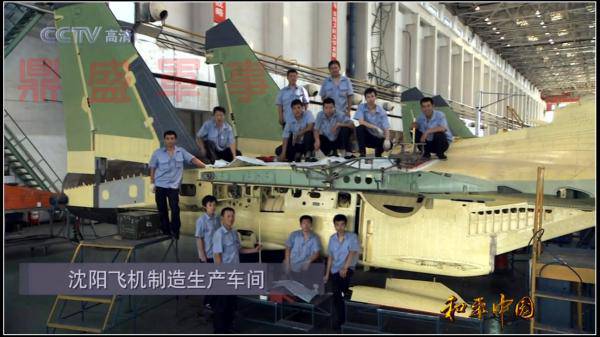
CJ-5. Nanchang. A copy of the Yak-18, removed from service.
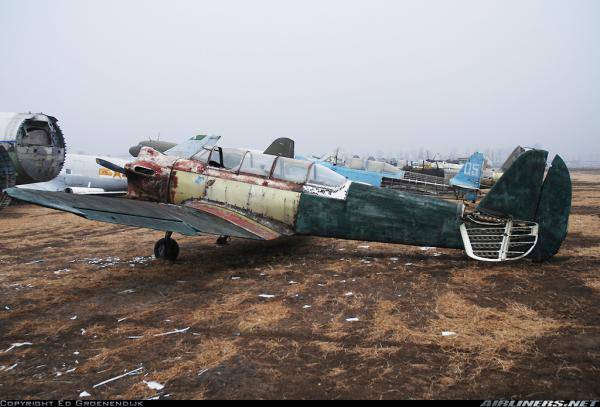
CJ-6. Nanchang. The main piston training aircraft, based on the Yak-18.
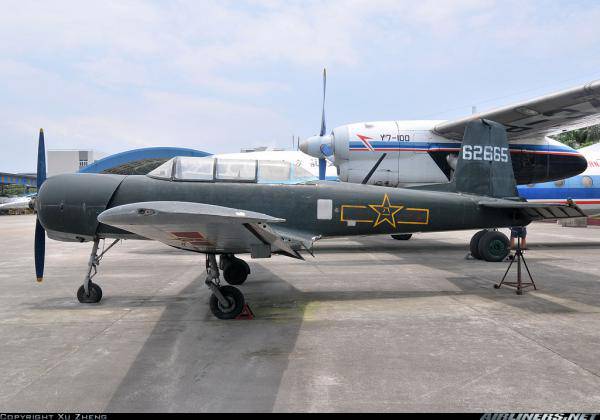
JJ-5. Shenyang. Educational version of J-5.
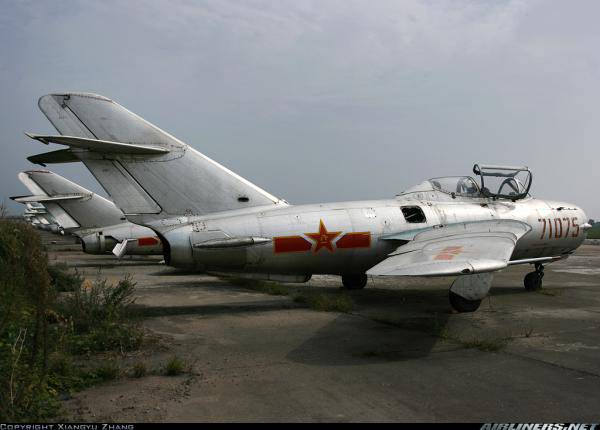
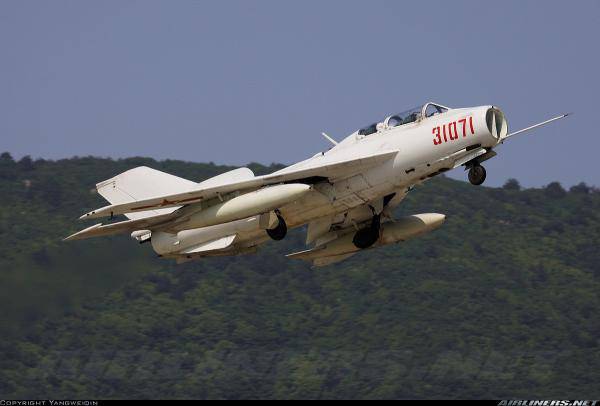
JJ-6. Shenyang Training version of the J-6.
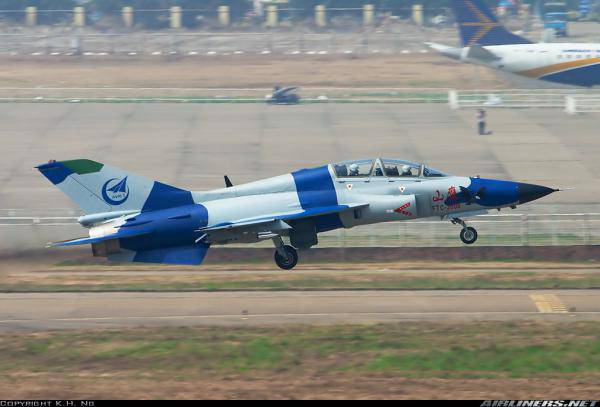
J-7. Guizhou Educational version of J-7.
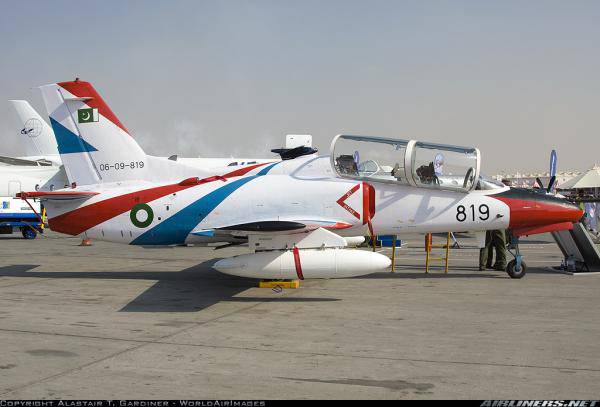
JL-8 Nanchang. Combat training jet aircraft, created jointly with Pakistan on the basis of the Czech L-39 Albatros.
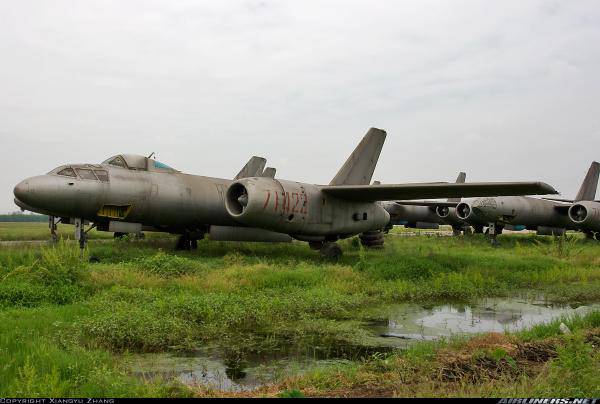
HJ-5 Harbin. A copy of the IL-28U.
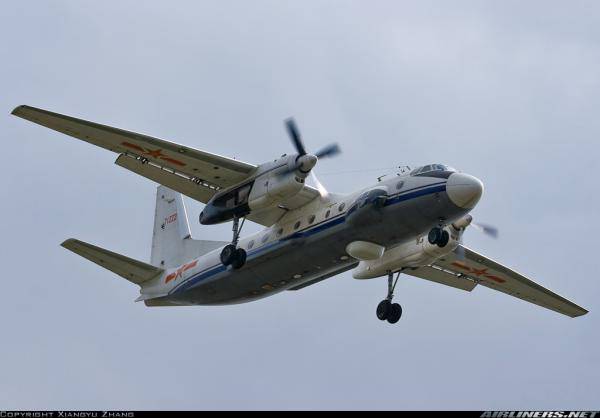
HYJ-7 Xian. Training bomber based on Y-7 (An-24).
DRLO aircraft
AR-1. Experienced, based on the Tu-4.
KJ-1. Experienced, based on H-4 (Tu-4).
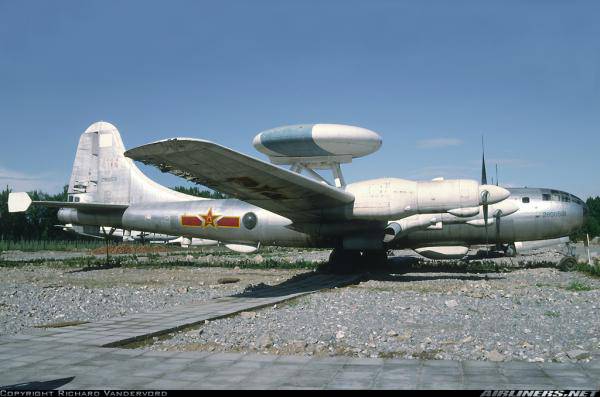
Y-8J (Y-8AEW), KJ-200 Shaanxi. Based on Y-8 (An-12).
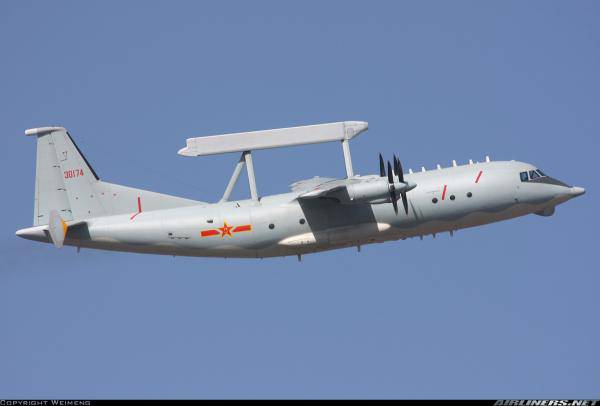
KJ-2000 XAC (Nanjing). Based on IL-76.
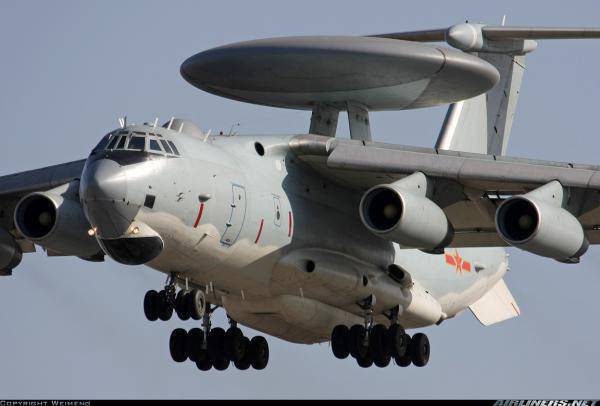
Special aircraft
HD-5 Harbin. Aircraft EW, converted several H-5 bombers (IL-28).
HZ-5 Harbin. Reconnaissance aircraft, a copy of the IL-28P
H-6 UAV Xian. Aircraft EW, based on the H-6 (Tu-16).
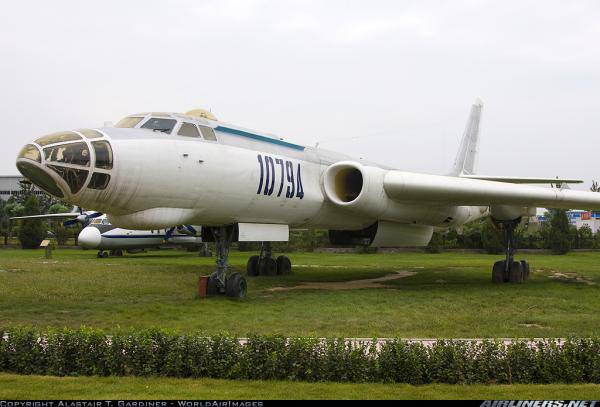
HY-6 Xian. Aircraft tanker, based on H-6.
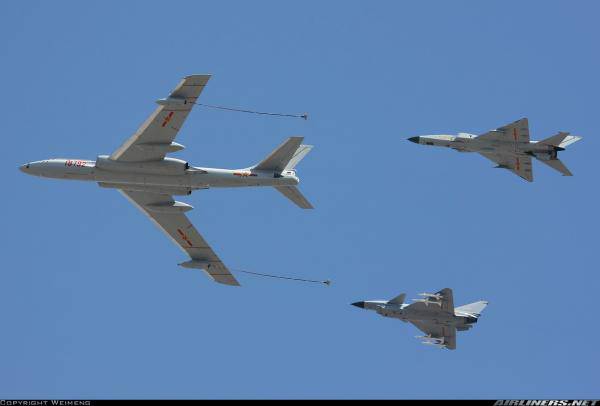
HDZ-6 Xian. Aircraft electronic intelligence, based on the H-5.
JZ-5 Shenyang. The reconnaissance aircraft, based on the J-5, analogue of the MiG-17Р.
JZ-6 Shenyang. The reconnaissance aircraft, based on the J-6, analogue of the MiG-19Р.
JZ-7 Chengdu. Reconnaissance aircraft, based on J-7.
JZ-8 Shenyang. Reconnaissance aircraft, based on J-8.
JWZ-5. Converted into carriers of the BUAA “Chang Hing-1” UAV, the H-4 (Tu-4) bombers.
Y-8MPA Shaanxi. Anti-submarine aircraft based on the Y-8 (An-12).
Y-8 C3I Shaanxi. Air command post, based on Y-8 (An-12)
Tu-154M / D EIC. Aircraft electronic intelligence, based on the Tu-154.
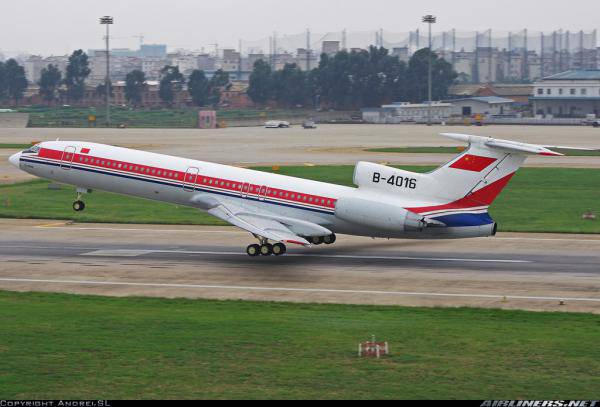
Helicopters
Mi-4.
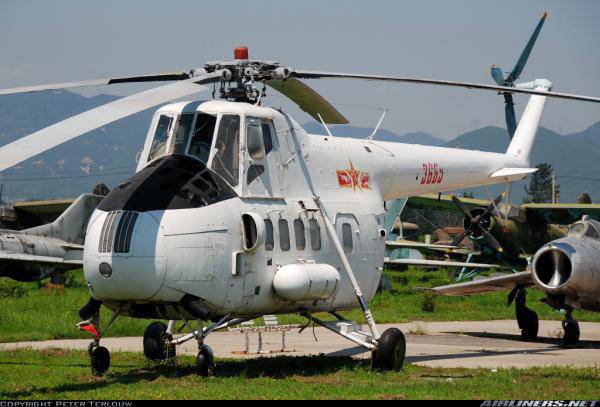
Mi-8.
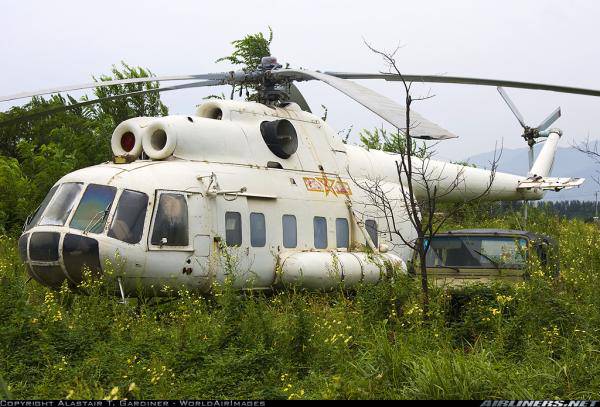
Ka-28.
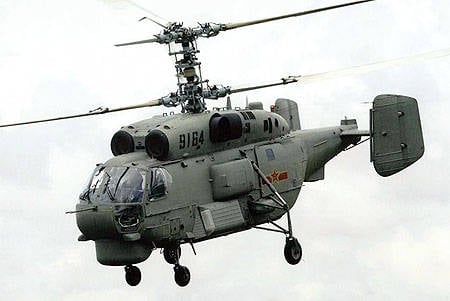
In conclusion
A farewell ceremony for the last J-6 fighters was held at one of the military airfields. "Veteran" is not just quietly written off in stock. A fighter who faithfully served for more than forty years, in China staged a solemn farewell.
The last batch of fighters was used for training purposes in the Jinan Military District. Now, the J-6 in unassembled form will be transported to one of the warehouses of the PLA Air Force, where it will be reassembled and stored carefully. Part of the machines will replenish the museum collection, because it is really about the legendary fighting machine.
J-6 - a copy of the Soviet MIG-19 - refers to the first generation of supersonic fighter jets produced in the PRC under a Soviet license.
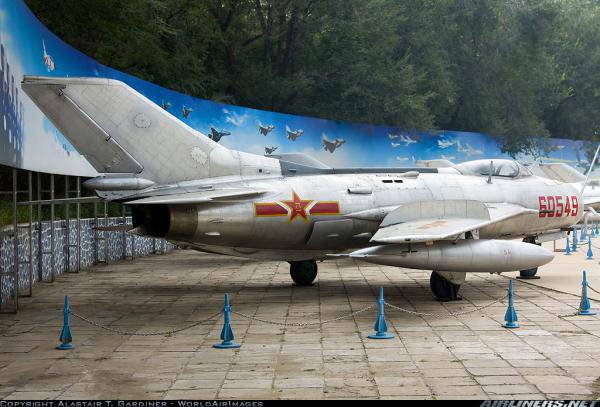
In addition, it is the most massive aircraft, produced for all history Chinese aviation industry. For more than 20 years in China, about 4000 combat vehicles were produced.
In the Soviet Union, the production of MiG-19 was discontinued in 1957 year - they were supplanted by more modern and fast machines. The fate of the Chinese relative of the "nineteenth" was much happier.
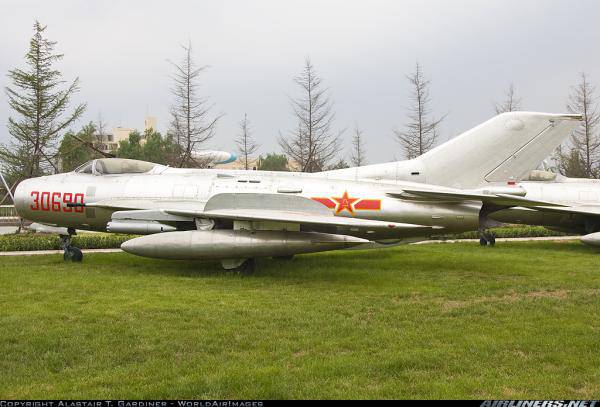
A start was made at the end of the 50s. In 1957, the Soviet Union and China signed an agreement on the licensed release of the MiG-19P and the RD-9B engine. The MiG-19P was an all-weather interceptor equipped with a radar and two guns (in China it was called the J-6). A little later, Moscow and Beijing concluded a similar agreement on the MiG-19PM, which was armed with four air-to-air missiles. The People's Republic of China in 1959 was transferred the license for the MiG-19С with gun armament.
The USSR handed over to the Chinese side technical documentation and five dismantled MiG-19P. And in March, 1958, an aircraft factory in Shenyang, began assembling fighters.
(brief information about Shenyang Aviation Plant - Shenyang Aviation Plant was established on the basis of the aircraft factory abandoned by the Japanese. The official opening date of the plant is considered 29 on July 1951 of the year. Subsequently, production of the MiG-XNUMHUTI (JianJiao-15 or JJ-2) was launched at this plant] 2], single-seat fighters were not produced, since by this time the PRC representatives were already negotiating the start of licensed production of more advanced MiG-2. The aircraft were equipped with WP-17 engines (Wopen-5, which were a copy of the Soviet VK-5).
Shenyang factory today.
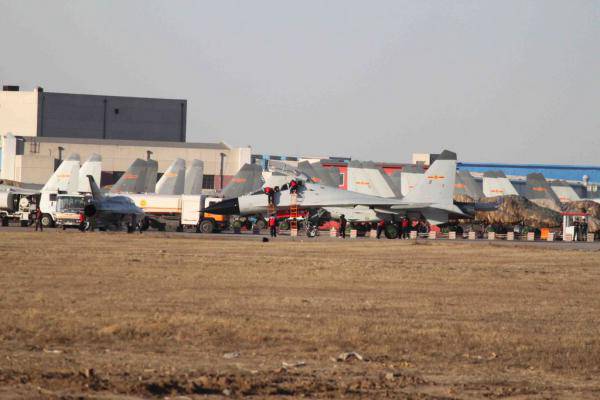
The first aircraft of the supplied Soviet spare parts flew into the air 17 December 1958 g. And the first flight of J-6 Chinese built took place at the end of September 1959 of the year, to the 10 anniversary of the founding of the PRC.
However, it took another four years to establish the in-line production of these machines. The J-6 in-line assembly in Shenyang did not begin until December 1963.
From the middle of 60's J-6 was the main machine that defended the air borders of China. From 1964 to 1971, the Chinese Air Force pilots of the Chinese Navy on J-6 destroyed 21 intruder airspace aircraft of the PRC. Among them, the Taiwanese amphibious HU-6 "Albatross", shot down over the sea 10 January 1966 g. Not without loss - in the 1967, in a battle with the Taiwanese F-104C "Starfighter" were destroyed two fighter J-6.
The J-6 fighters and the modifications created on its basis formed the basis of the strike power of Chinese aviation right up to the second half of the 1990's. China used fighter aircraft during the armed conflict with Vietnam in 1979, which is often called the "first socialist war."
The aircraft is unique not only a long history, but also widespread throughout the world. The export versions of the J-6 were designated F-6 and FT-6 (training version). China widely supplied these fighters to countries in Asia and Africa. The first buyer was in Pakistan 1965. Export modifications J-6 also entered service with the Air Force of Albania, Bangladesh, Vietnam, North Korea, Kampuchea, Egypt, Iraq (with the mediation of Egypt), Iran, Tanzania, Zambia, Sudan and Somalia.
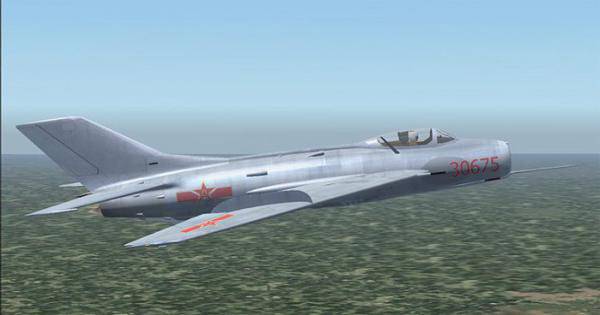
Information